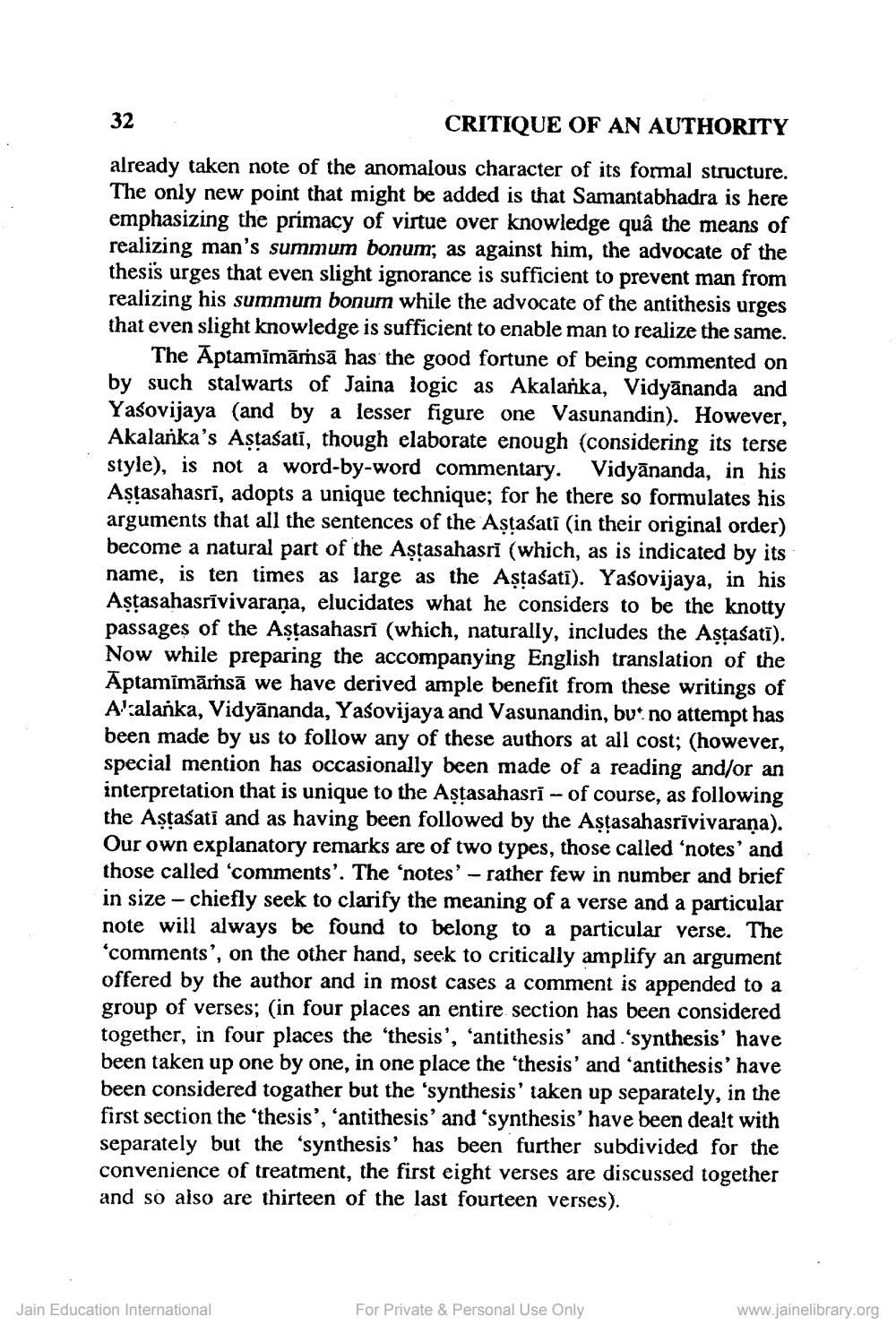________________
32
CRITIQUE OF AN AUTHORITY
already taken note of the anomalous character of its formal structure. The only new point that might be added is that Samantabhadra is here emphasizing the primacy of virtue over knowledge quâ the means of realizing man's summum bonum, as against him, the advocate of the thesis urges that even slight ignorance is sufficient to prevent man from realizing his summum bonum while the advocate of the antithesis urges that even slight knowledge is sufficient to enable man to realize the same.
The Aptamīmārsā has the good fortune of being commented on by such stalwarts of Jaina logic as Akalanka, Vidyānanda and Yasovijaya (and by a lesser figure one Vasunandin). However, Akalanka's Astašati, though elaborate enough (considering its terse style), is not a word-by-word commentary. Vidyānanda, in his Aștasahasri, adopts a unique technique; for he there so formulates his arguments that all the sentences of the Astašati (in their original order) become a natural part of the Astasahasri (which, as is indicated by its name, is ten times as large as the Aştaśatī). Yasovijaya, in his Astasahasrīvivarana, elucidates what he considers to be the knotty passages of the Astasahasri (which, naturally, includes the Aştaśatī). Now while preparing the accompanying English translation of the Aptamīmārsā we have derived ample benefit from these writings of Altalanka, Vidyānanda, Yaśovijaya and Vasunandin, but no attempt has been made by us to follow any of these authors at all cost; (however, special mention has occasionally been made of a reading and/or an interpretation that is unique to the Astasahasri - of course, as following the Astašati and as having been followed by the Astasahasrīvivarana). Our own explanatory remarks are of two types, those called 'notes' and those called 'comments'. The 'notes' - rather few in number and brief in size - chiefly seek to clarify the meaning of a verse and a particular note will always be found to belong to a particular verse. The "comments', on the other hand, seek to critically amplify an argument offered by the author and in most cases a comment is appended to a group of verses; (in four places an entire section has been cons together, in four places the 'thesis', 'antithesis' and 'synthesis' have been taken up one by one, in one place the thesis' and 'antithesis' have been considered togather but the 'synthesis' taken up separately, in the first section the thesis', 'antithesis' and 'synthesis' have been dealt with separately but the 'synthesis' has been further subdivided for the convenience of treatment, the first eight verses are discussed together and so also are thirteen of the last fourteen verses).
Jain Education International
For Private & Personal Use Only
www.jainelibrary.org




